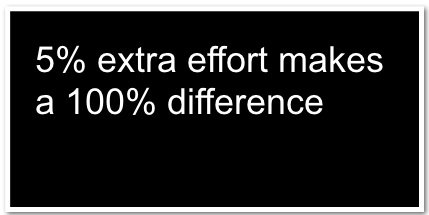A little extra effort can make the world of a difference
The extra mile. Something that have been put under a lid lately. But what if just a little extra mile, can change the mind and possibilities of a child that would otherwise not be so lucky?
A barrier to learning is anything that prevents a learner from participating fully and learning effectively. It may be learners who are visually or hearing impaired, learners who are left-handed or learners who are intellectually challenged. Barriers to learning cover a wide range of possibilities and learners may often experience more than one barrier. Some barriers, therefore, require more than one adaptation in the classroom and varying types and levels of support.
They may also require and should be granted more time for:
- Completing tasks
- Acquired thinking skills (own strategies)
- Assessment activities
Source
Teachers need to adapt the number of activities to be completed without interfering with the learners gaining the required language skills. They also need to develop adaptive and alternative methods to assess learners with barriers to learning, so that learners are given opportunities to demonstrate competence in ways that suit their needs.
Source
Here are some examples of how to assess these learners while still maintaining the validity of the assessment:
- Some learners may need concrete apparatus for a longer time than their peers.
- Assessments tasks, especially written tasks, may have to be broken up into smaller sections for learners who cannot concentrate or work for a long time, or they may be given short breaks during these tasks. Learners can also be given short breaks during these tasks. Learners can also be given extra time to complete tasks.
- Some learners may need to do their assessment tasks in a separate venue to limit distractions.
- A variety of assessment instruments should be used, as a learner may find that a particular one does not allow him/her to show what they can do.
- Learners who cannot read can have tasks read to them and they can orally dictate answers. Assessment can also include a practical component in which learners can demonstrate their competence without having to use language.
A true understanding of each learner's background, strengths, unique abilities, needs and barriers is essential for the teacher as it is the teacher that is a facilitator of learning. Content and material should be kept as relevant as possible and at times broken down into small, manageable and logical steps. Plan ahead and keep instructions clear and short.
Activities should be graded according to the different levels and abilities of learners. Try to ensure that learners remain challenged enough without undue stress. Remember that learners can also help one another in the form of group types, peer assistance, buddy systems and so on, but it will only be beneficial if those learners feel included and supported by both the teacher and the peers.

Resources:
Barriers and resources to learning
Guidelines for inclusion
Assessments in the classroom
Adaptive assessment methods
Curriculum assessment
Tips for boosting attainment
Teaching to every learner's unique learning style

I agree, unfortunately most teachers feel overwhelmed nowadays.
It's time to start changing the whole concept, the Finnish seem to have a good handle on the situation.
Very informative is your post. If the learners and teachers pay attantion to all these points, it will be the best result.
Mi respeto a los maestros y profesores de personas con algunas discapacidad o compromiso cognitivo. Una loable labor la que ustedes desempeñan. si es difícil enseñar a los chicos sin estos compromisos, cómo será trabajar con estas personas. Sigan adelante y éxitos